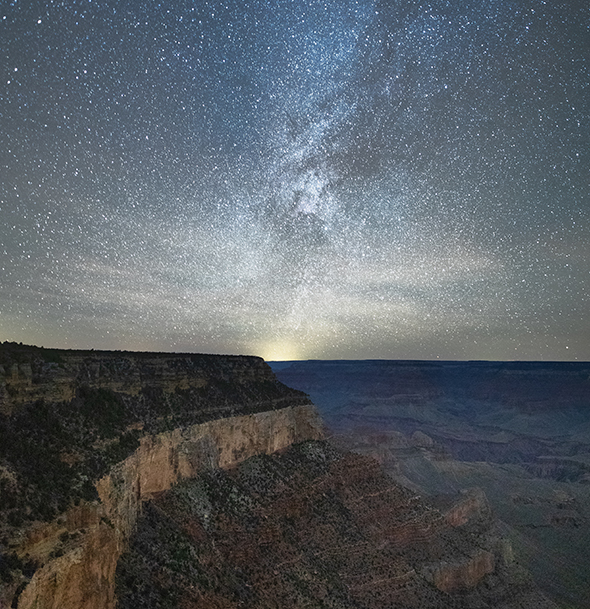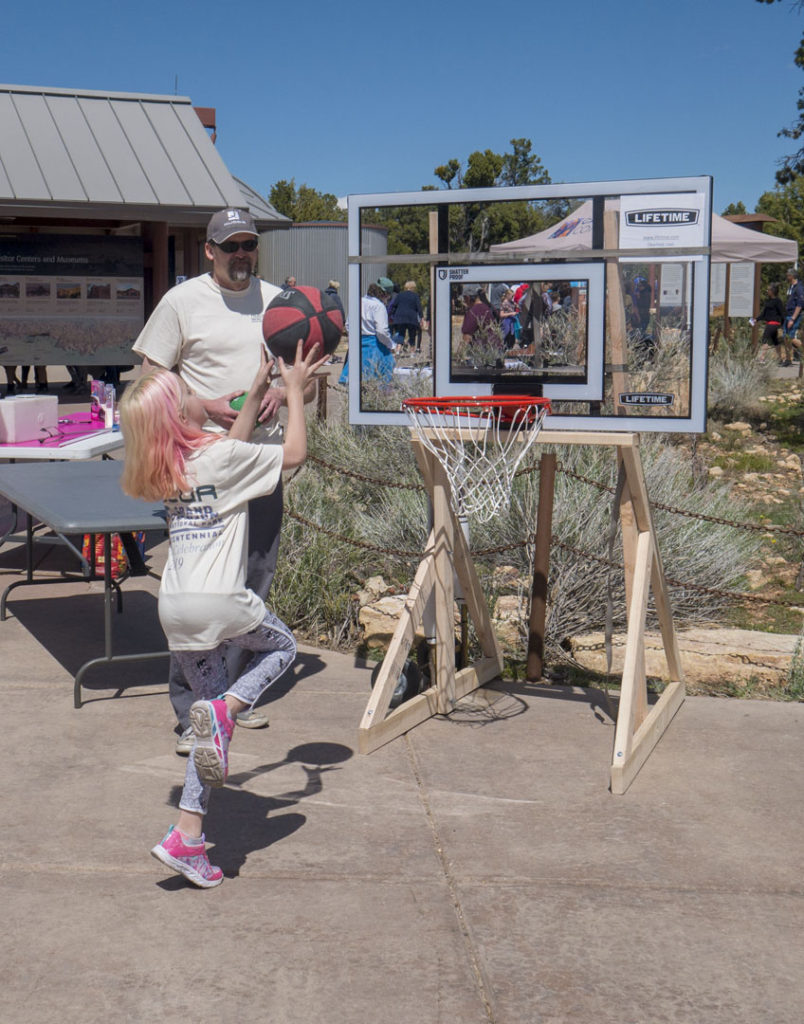Canyon Culture A Century of Scenery and Wonder

Writer Joseph J. Airdo
Photography Courtesy of GRCA NPS, Grand Canyon National Park Service and Lear Miller
[dropcap]T[/dropcap]here really is no way to definitively determine the exact age of the Grand Canyon. Geologists continue to debate the issue, with some saying the canyon was formed just 6 million years ago and others arguing that dinosaurs roamed its 277-mile length 70 million years ago.
However, we do know that 11 Native American tribes have called the canyon home for at least the past 4,000 years. We also know that America naturalist John Wesley Powell led the first scientific expedition on the Colorado River through the Grand Canyon in 1869, and that President Teddy Roosevelt designated the Grand Canyon a national monument in 1908.
The most notable moment in the canyon’s existence, though, occurred in 1919—100 years ago—when Grand Canyon National Park was established. The park received 44,000 visitors during its first year in operation. Since then, that number has skyrocketed to more than 6.25 million visitors.
Grand Canyon National Park will celebrate its centennial June 22–29 with a summer festival and star party at its visitor center. The free events are just the latest in a year-long series of celebrations that started with Founders’ Day in February.
“It is really just a way for visitors and park partners to come and be able to commemorate the centennial in an interactive way,” says marketing manager Alysa Ojeda, noting that officials have invited a number of different organizations to the park during the summer festival.
The event aims to showcase everything that Arizona has to offer. In addition to food and alcohol vendors, there will be several activities that will give visitors an even grander understanding of the Grand Canyon. The daytime activities include cultural demonstrations by tribes native to the canyon.
“We will have some cultural demonstrators at the park to really tie in that cultural element,” says Ojeda, noting that representatives from tribes such as Hopi, Zuni and Navajo will be on hand 10 a.m. to 4 p.m. each day during the event. “They will be sharing their artisanal crafts that are specialized to their individual tribes. Park visitors will really be able to see the canyon’s past and commemorate that cultural heritage.”
Visitors with children will find June 22 the best day to attend the summer festival as it has been dubbed Junior Ranger Day. The visitor center plaza will be occupied by plenty of booths offering children fun and interactive ways to learn about the Grand Canyon. Attendees will receive free gifts—including a replica of a ranger hat—while learning why national parks matter and how they can help keep parks healthy for future generations.
“People will be able to walk around and interact with these different organizations,” says Ojeda, noting that endangered species and trail restoration are among the topics that will be addressed. “A lot of the booths will all have an educational component, so it will be easy for kids to learn some fun facts. We are even working on getting a mobile planetarium up that will be available that day for kids and families.”
The event, which will be duplicated on June 29 to close out the summer festival, is an extension of the National Parks Service’s Junior Ranger Program, encouraging young visitors to explore, learn and protect our country’s national parks.
“We want to create future park stewards through these educational programs,” Ojeda explains. “We want to bring kids to our parks and get them to care about our public lands. They are the ones who are going to help protect them so that people can continue to have access into the canyon in a safe and well-maintained manner.”
At 4 p.m. each evening, the park will host a screening of a Grand Canyon-themed movie in its visitor center theater.
“We have a little Grand Canyon Film Festival planned,” Ojeda says “We want to give people something to do between our daytime events and the star party. When they are done hiking for the day, they can come relax and learn a little bit about the Grand Canyon through film.”
Scheduled movies include the Robert Redford-narrated documentary “National Parks Adventure” and the new PBS documentary “Beyond the Rim: The Next 100 Years of Grand Canyon National Park.”
The celebration continues when the sun descends into the gorgeous Grand Canyon landscape. The park will host a star party, which will begin at 8 p.m. each night with an educational lecture by an astronomy expert in the visitor center theater. Scheduled guests include Lowell Observatory historian Kevin Schindler, Dr. Lisa Prato and Dr. Danielle Adams from the Lowell Observatory, and Dean Regas from the Cincinnati Observatory.
After each lecture, visitors can migrate to the parking lot for an opportunity to peek into telescopes provided by volunteers from the Tucson Amateur Astronomy Association and the Saguaro Astronomy Club of Phoenix. Several evenings will be capped off by a night sky photography workshop in the visitor center theater.
“The star party is really just a chance for anyone who may live in a big city and not have access to a clear night sky view to come and see some constellations,” Ojeda says. “The Grand Canyon offers one of the best night sky viewing areas and it is still one of the few places in the U.S. where you can see the Milky Way.”
The Milky Way is perfectly framed in the night sky above the Grand Canyon during the summer months. There will also be excellent views of Jupiter, Saturn, Mercury and Mars from the park.
The highlight of the star party is International Dark-Sky Association program manager Dr. John Barentine’s visit on June 22, at which time Grand Canyon National Park will be officially certified an IDA Dark-Sky Park.
The International Dark-Sky Association is a non-profit organization that works to preserve and protect the nighttime environment and our heritage of dark skies through environmentally responsible outdoor lighting.
According to the association’s website, a land must “possess an exceptional or distinguished quality of starry nights and a nocturnal environment that is specifically protected for its scientific, natural, educational, cultural heritage and/or public enjoyment” in order to be certified an IDA Dark-Sky Park.
“This is something that has been in the works for several years,” Ojeda notes. “We have had teams going out to retrofit and fix out light fixtures throughout the park to be dark-sky friendly. As our cities get bigger and light pollution becomes an issue, especially for surrounding areas like Phoenix, Las Vegas and Los Angeles, we want to keep [Grand Canyon National Park] a place where people can come and see the night sky.”
Ultimately, Grand Canyon National Park’s Centennial Summerfest and Star Party is more than just an event celebrating the birthday of our country’s most awe-inspiring national park. It is a way to commemorate Arizona’s storied history and instill within a new generation the desire to preserve its rich culture through the next 100 years.
Moreover, it is an invitation for people to visit our state’s most defining natural wonder—especially those who may have experienced the Grand Canyon when their parents brought them as children years ago, but have yet to return to share it with their own families.
“We have a lot of different amenities at the park now that were not there 25 years ago. The village area has really grown,” says Odeja, noting Grand Canyon National Park’s new shuttle service helps visitors move about the area more quickly and more conveniently.
“We want people to come be a part of the park’s centennial. If they cannot make it in 2019, they can start planning their trip for 2020.”
Grand Canyon Centennial Summerfest and Star Party
June 22–29 | Grand Canyon Visitor Center | S. Entrance Rd., Grand Canyon Village | Free | nps.gov/grca


